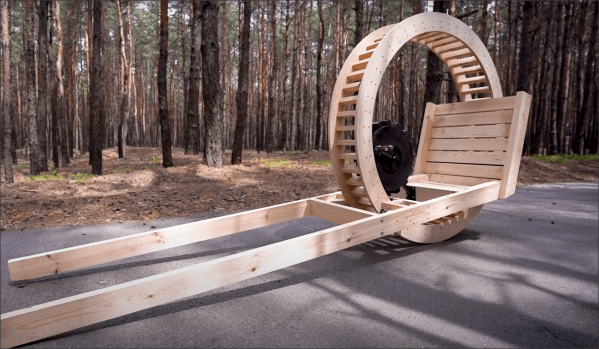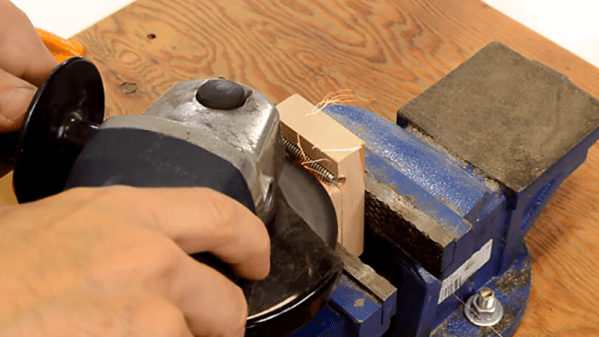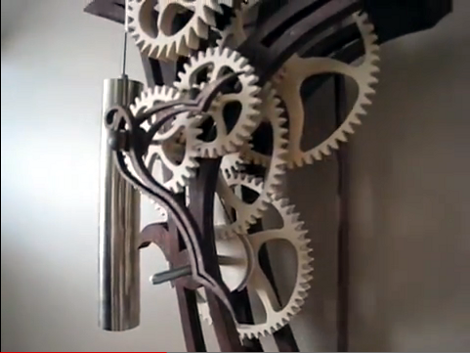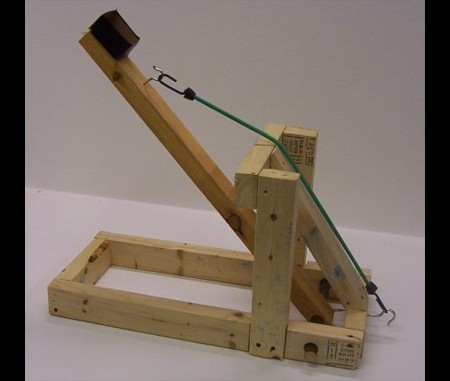Monowheels are nothing new, first being patented in the middle of the 19th century, but never really went mainstream due to, well, quite a lot of obvious issues. We’ve got problems with forward visibility, stability, steering, especially at speed, and the hilariously-named ‘gerbiling’ where the rider can spin around inside the wheel akin to a gerbil in a wheel. Fun times! But obviously that didn’t stop [The Q] from adding to the monowheel corpus by building one out of wood.
Sometimes people take on these projects simply for a laugh, like this bright orange one we covered a while back. Sometimes they’re powered by a motor, be it electric or internal combustion. Some are hand-cranked, some are pedal-powered, its all been tried.
[The Q] is no stranger to interesting wooden builds, and this video from a year ago shows him building a very simple direct-pedal-drive monowheel. The vast majority of the structure is wood, glued and screwed the old-fashioned way, with a bit of metalwork where necessary. We particularly like the simple counterweight solution which doubles up as a parking brake. It may look a little ungainly, but we can’t think of a simpler solution that would make much sense.
The build video after the break is six and half minutes of well executed videography for your viewing pleasure.
Continue reading “Wooden Monowheel Build Is Simplicity Itself”
















